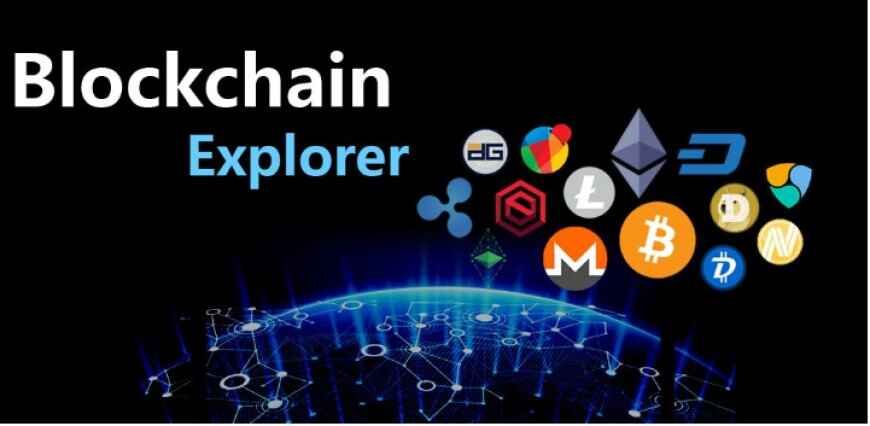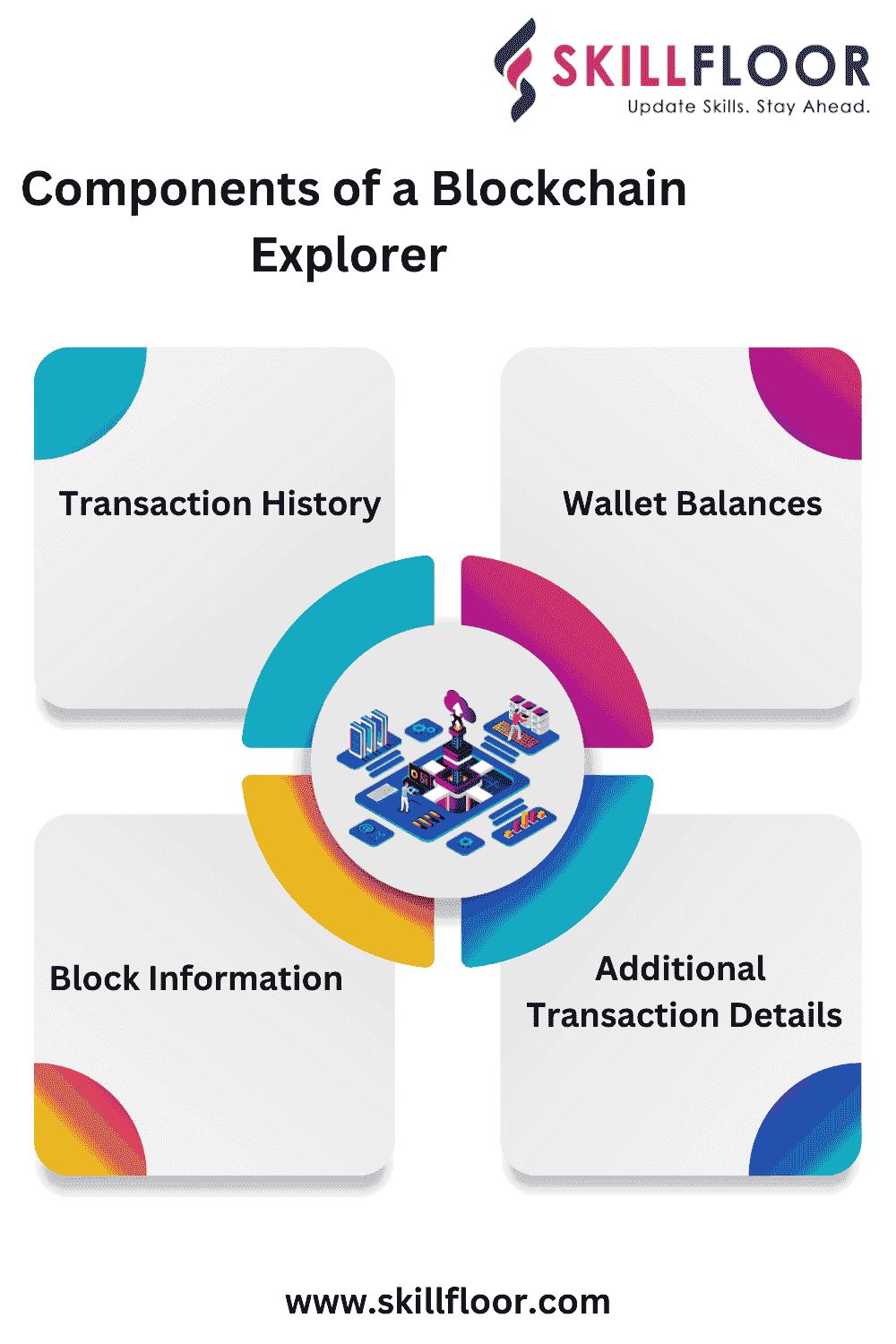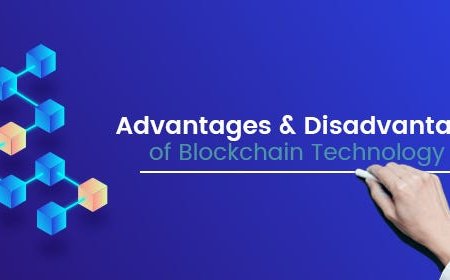What Is a Blockchain Explorer and How to Use It?
Explore blockchain transactions, verify wallet balances, and navigate decentralized ledgers with a Blockchain Explorer. Learn how to use this tool for transparent transaction tracking.

Blockchain technology has revolutionized the way we perceive and handle digital transactions. At the heart of this innovation is the concept of a blockchain, a decentralized and transparent ledger that records transactions across a network of computers. As the popularity of blockchain technology grows, so does the need for tools that allow users to explore and understand the data within these digital ledgers. One such tool that plays a crucial role in navigating the blockchain landscape is the Blockchain Explorer.
What is a Blockchain Explorer?
A Blockchain Explorer is an essential web-based application with an intuitive user interface that provides access to the decentralized world of blockchain technology. Its main function is to make it easier for users to engage with the vast amount of data stored on the blockchain. It is easy for users to examine wallet balances, explore transaction histories, and retrieve other relevant data. Explorer improves accessibility and demystifies the intricacies of decentralized ledgers by serving as a clear window into the inner workings of blockchain technology. By giving users from blockchain enthusiasts to enterprises a straightforward and understandable way to explore and grasp the complexities of this revolutionary digital ecosystem, it empowers people.
Components of a Blockchain Explorer

A Blockchain Explorer is a comprehensive tool that allows users to interact with and explore the data stored on a blockchain. Its functionality is crucial in providing transparency and accessibility to the decentralized ledger system. Let's delve into the key components of a Blockchain Explorer:
Transaction History
The transaction history component of a Blockchain Explorer enables users to trace and explore the details of transactions recorded on the blockchain. This includes information about the sender's and recipient's addresses, the amount transferred, transaction timestamps, and transaction status (confirmed or pending). Users can follow the flow of funds through the blockchain, promoting transparency and accountability.
Wallet Balances
Another essential feature of a Blockchain Explorer is the ability to check the balance of a specific wallet address. Users can input a wallet address into the Explorer's search bar, and it will retrieve and display the current balance of that wallet. This functionality is valuable for individuals and businesses to verify the accuracy of their account balances and track incoming and outgoing transactions.
Block Information
Blockchain transactions are grouped into blocks, and the Block Information component of a Blockchain Explorer allows users to explore details about these blocks. Users can access information such as the timestamp of when the block was added to the blockchain, the number of transactions within the block, and the unique hash identifier of the block. Understanding block information is crucial for gaining insights into the structure and organization of the blockchain.
Search and Getting Around
A user-friendly search and interface is a fundamental component of any Blockchain Explorer. Users can enter wallet addresses, transaction IDs, block numbers, or other relevant information into the search bar to retrieve specific details. The navigation tools within the Explorer allow users to move seamlessly between different transactions, wallet addresses, and blocks, enhancing the overall user experience.
Additional Transaction Details
By clicking on individual transactions within the Explorer, users can access more granular details about each transaction. This includes information such as transaction fees, the number of confirmations, and any associated metadata. Having access to these additional details enhances the user's understanding of the intricacies of each transaction.
How to Use a Blockchain Explorer
a. Entering a Wallet Address
To explore a specific wallet, users can enter the wallet address into the search bar of the Blockchain Explorer. This will pull up relevant information about the wallet, including its transaction history and current balance.
b. Transaction Details
By clicking on a specific transaction within the Explorer, users can access detailed information about that transaction. This includes the sender's and recipient's addresses, the amount transacted, and the transaction status.
c. Block Exploration
Users can explore individual blocks by entering the block number or hash into the Blockchain Explorer. This provides a comprehensive overview of the transactions contained within that block.
Why Use a Blockchain Explorer?
The use of a Blockchain Explorer is essential for several reasons, each contributing to the overall transparency, accountability, and functionality of blockchain technology. Here are some key explanations on why utilizing a Blockchain Explorer is crucial:
Transparency and Trust
-
Verification of Transactions: Blockchain Explorers allow users to independently verify and validate transactions. This transparency is fundamental to the decentralized nature of blockchain, as users can track the flow of funds and ensure that transactions are legitimate and accurate.
-
Immutable Record: The information recorded on a blockchain is immutable, meaning it cannot be altered or tampered with. Blockchain Explorers provides a way for users to access this unchangeable record, instilling trust in the integrity of the data.
Auditing and Compliance
-
Regulatory Compliance: Businesses and financial institutions can use Blockchain Explorers to audit transactions and ensure compliance with regulatory standards. The ability to trace transactions in real time facilitates adherence to financial regulations and provides a verifiable record for regulatory authorities.
-
Financial Transparency: By offering a detailed view of wallet balances and transaction histories, Blockchain Explorers aid in financial transparency. This is particularly important for businesses seeking to build trust with stakeholders and demonstrate their commitment to ethical and transparent financial practices.
Educational Purposes
-
Learning about Blockchain Concepts: Blockchain Explorers serve as invaluable educational tools. They allow individuals, students, and developers to explore the blockchain ecosystem, gaining hands-on experience in navigating transactions, understanding block structures, and comprehending the decentralized nature of blockchain networks.
-
Demystifying Technology: As blockchain technology continues to evolve, Blockchain Explorers play a crucial role in demystifying its complexities. Users, including those new to blockchain, can interact with the technology in a practical and user-friendly way, fostering a deeper understanding of its inner workings.
Community Engagement
-
Community Participation: Many blockchain networks are built on the principles of decentralization and community involvement. Blockchain Explorers provide a platform for community members to actively engage with the network, explore transactions, and contribute to the overall transparency and security of the blockchain.
-
Open Source Development: Blockchain Explorers often operate as open-source projects, encouraging collaboration and contributions from developers worldwide. This fosters innovation and improvements in the functionality and features of the Explorer, benefiting the entire blockchain community.
The Future of Blockchain Explorers
The future of Blockchain Explorers holds exciting prospects as blockchain technology continues to evolve. As the adoption of decentralized finance (DeFi) and non-fungible tokens (NFTs) grows, Blockchain Explorers are likely to undergo advancements to accommodate the expanding complexity and diversity of blockchain ecosystems. Improved user interfaces and enhanced data visualization tools may make blockchain data more accessible to a broader audience. Additionally, with the ongoing development of interoperability between different blockchain networks, future explorers might provide cross-chain insights, allowing users to explore transactions and assets seamlessly across various blockchains.
As blockchain technology becomes more integrated into mainstream industries, Blockchain Explorers could play a pivotal role in fostering transparency, regulatory compliance, and user education. The future envisions these explorers not only as tools for verifying transactions but as comprehensive platforms that empower users to engage more meaningfully with the decentralized digital environment.
Transparency and accessibility are offered by Blockchain Explorer, an approachable entry point into the decentralized world of blockchain technology. Users, from amateurs to corporations, can obtain insights into this groundbreaking technology by exploring transaction history, checking wallet balances, and understanding block data. Explorers will develop along with blockchain technology, and they will be essential to maintaining user education, compliance, and transparency in the changing internet.




























































